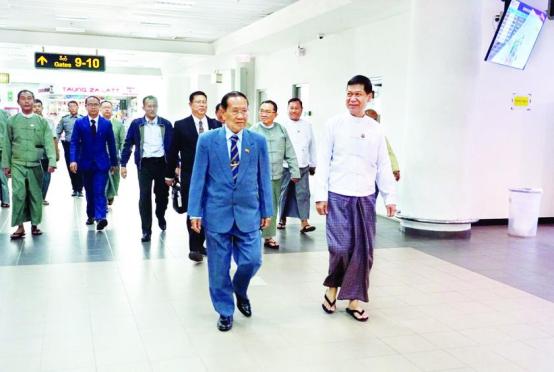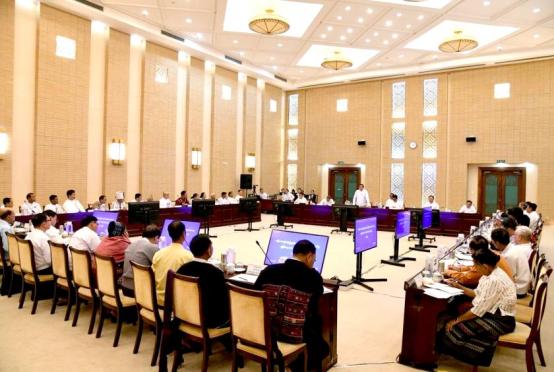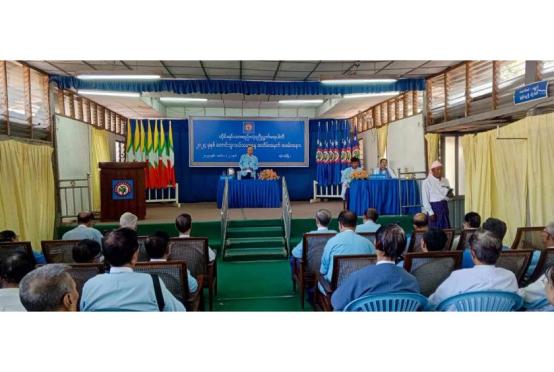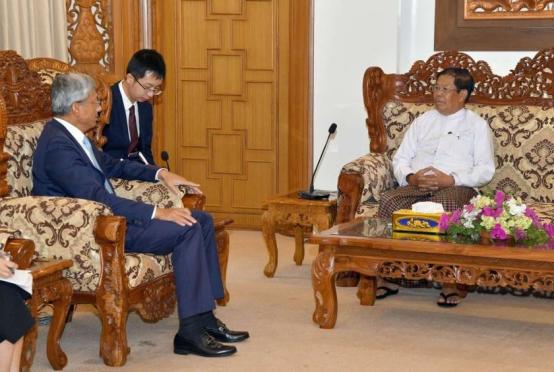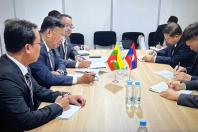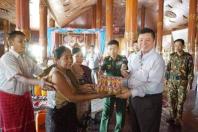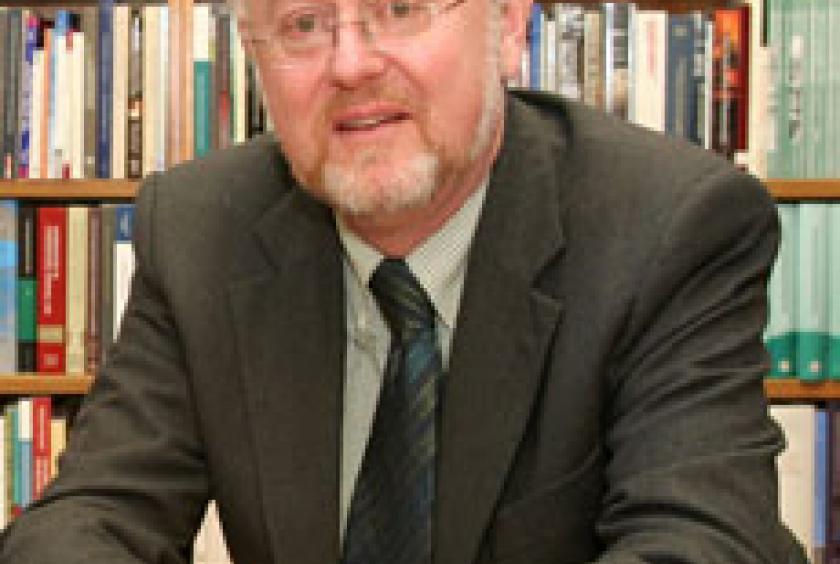
December 12, 2019 marks the last day of the case brought forward by The Gambia to the International Court of Justice (ICJ) at The Hague, Netherlands.
For the duration of the three days long hearing, both sides submitted and rebuffed their opposition's legal claims.
The following is the full transcript of Myanmar's Lawyer Professor William Schabas, as provided by the ICJ.
LACK OF A PLAUSIBLE CLAIM
1. Mr. President, Your Excellencies, there have been many references to the Fact-Finding Mission set up by the Human Rights Council. Indeed the case set before you by The Gambia relies entirely on the reports of the Fact-Finding Mission. For this reason, this morning The Gambia sought to defend the criticisms that were made on the Observations about the quality of the report of the Fact-Finding Mission. Yesterday I criticized the Fact-Finding Mission, amongst other things, for the allegation in the report recently issued in 2019 that genocidal intent had strengthened. You may recall on Tuesday’s hearing, counsel for The Gambia laid considerable emphasis on this observation as a way of bolstering the argument favouring provisional measures. This morning it was suggested that I had actually not studied the report adequately and that I had missed some important paragraphs and relevant portions. I would not want the Court to think that I made such a statement here without thoroughly reviewing the Fact-Finding Mission report. I have studied that report, the recent one, which is about 200 pages long, as well as the longer one from the previous year, more than 400 pages in length. I have read every paragraph. Mr. Reichler referred to paragraph 9 where the Fact-Finding Mission set out its summary explanation for why it thought genocidal intent was strengthening in 2019 compared to 2018. Members of the Court may already have noticed that when he actually recited the reasons, the word continuation appeared more than once. Paragraph 9 speaks of “continued denial of their citizenship and ethnic identity, the living conditions to which it subjects them, its failure to reform laws that subjugate the Rohingya people, the continuation of hate speech directed at the Rohingya, its prior commission of genocide and its disregard for accountability”. We find all of these points in the 2018 report. There is nothing new. They are the same allegations. The indicators that were pointed to in the 2018 report are the same that were repeated in the 2019 report. If anything, the 2018 report with its description of the conflict in 2017, of the deaths, of the abuses, all of those allegations, is much worse in the 2018 report than in the 2019 report. This explains my conclusion that it was only the opinion of the Fact-Finding Mission to use the label “genocide” and to affirm that there was genocidal intent; that is strengthened. My suggestion to the Court is that it not take into account the claim in the report of 2019 that the genocidal intent that it purports to identify has strengthened.
2. Mr. President, Members of the Court, this morning we were shown slides relating to the position of the United Nations High Commissioner for Refugees (UNHCR). There were two slides that were shown, by my recollection. The implication seemed to be that Myanmar had presented the Court with a partial picture, or that perhaps it had even attempted to mislead the Court. Some of you may have noticed, if you have studied the slides, that the references were to documents from the United Nations High Commissioner for Refugees from 2018, one of them quite early in the year 2018, indeed almost two years ago. Whereas, the document that Myanmar referred to yesterday was more recent, it was dated November 2019 ¾ one month ago. It clearly indicated that the reality on the ground is fluid and that there is ongoing and meaningful engagement between the parties attempting to deal with a difficult situation. In fact, the UNDP (United Nations Development Programme), and the United Nations High Commissioner for Refugees, in the most recent report of November 2019, outlined the main challenges facing communities in Rakhine State and the need to address these in order to repatriate those who are displaced. The report indicated three short-term next steps that the parties need to undertake. The United Nations High Commissioner for Refugees expressed continued commitment to assess the needs of those who are displaced and how they might be met by the Government of Myanmar.
3. This morning, counsel for The Gambia produced a news clipping indicating a deployment of troops before the events of late August 2017, the implication being that the army’s operations on 25 August 2019 and the subsequent days had been planned well in advance. Whatever the time of deployment, the fact remains that there were more than 30 attacks launched simultaneously on 25 August 2017. These were obviously not planned by the authorities of Myanmar. Let me also remind the Court that the internal armed conflict started with the earlier ARSA attacks, in October 2016, 10 months before the deployment that was referred to in the newspaper clipping shown to you this morning. It should go without saying that there would have been several deployments and rotations of personnel during this period. There is nothing sinister about this. If anything, the presentation of such a news clipping shows the risks associated with a selective approach to the facts in Rakhine State.
4. Counsel for the Applicant made many comments this morning about what was labelled the failure of Myanmar to deny certain allegations of a factual nature. We were told that this is not a proceeding on the merits. We have been warned not to engage in such a debate by Practice Direction XI. Yesterday, I quite clearly said that, with reference to the case law of the Court, establishing that one or more of the punishable acts listed in Article II of the Genocide Convention had never been a problem to litigants. For that reason, I made it clear that I would therefore not concern myself with this dimension of the case but, rather, direct my attention to the part that The Gambia had virtually ignored in its submissions and what is really the essence of this case, which is the mental element.
5. This morning, the Applicant went through, rather methodically, a list of “indicators” that was considered by the Fact-Finding Mission in reaching its conclusion about genocidal intent. This list appears to be derived from a detailed matrix which has been prepared by the United Nations Office on Genocide Prevention, presided over by the Special Adviser on the Prevention of Genocide. The relevant document was entitled “Framework of Analysis for Atrocity Crimes: A tool for prevention” and it is referred to in several paragraphs of the 2019 report. This confirms, by the way, that the list of indicators developed by the Office of Genocide Prevention was in fact inspired by this matrix of factors, the Framework of Analysis adopted in New York, by the Office on Genocide Prevention. I checked my records yesterday evening to confirm that I had personally assisted in the preparation of this document, the Framework of Analysis, joining the two special advisers and the professionals at sessions where these were discussed and developed.
6. I have always been intrigued by the list people engaged in the field of genocide have struggled for many years to see if a formula, some sort of framework could be developed that could identify the potential, the warning signs of genocide. It is always a problem because the lists that are prepared, the attempts at preparing a list, inevitably consist of long recitals of human rights violations that indeed may be present, and in fact are inevitably present, if the genocide takes place. But that are also present in so many other environments and in so many other contexts where genocide has not taken place, is not taking place and is highly, highly unlikely to take place. These lists of indicators are very long. There are many countries represented in this room; I dare say that virtually every country where people in this room come from will tick several of the boxes on those lists of indicators of genocidal risk factors. One need only to confirm this, read the reports of the treaty bodies of the United Nations and the reports under the universal periodic review submitted to the Human Rights Council. The Special Adviser uses the list to identify situations. I mentioned yesterday and it was not challenged, contested or explained by the counsel for the Applicant this morning that the Special Adviser has not referred to Myanmar for 15 months and in that same time has issued declarations on several other situations in the world that are very far from being situations where there is a serious risk of genocide.
7. We could return to the discussion in the report that was referred to by Mr. Reichler in his submission this morning. The indicators that were cited begin with “extreme brutality”. We can well imagine how many countries will generate evidence of extreme brutality. The second was the organized nature of the activities or of the acts. Again, this is present in many situations. The third is sexual violence ¾ a phenomenon that regrettably occurs in many parts of the world and that we all condemn unequivocally. The fourth, hate speech. Let me linger on that point for a few minutes. Mr. President, Members of the Court, hate speech is a phenomenon that is not reserved to Myanmar. Not only do we have hate speech in many parts of the world, in many countries, but debates rage about how robust the legal intervention to address it should be. Some countries insist that it may even fall within the protected domain of freedom of expression.
8. As an example, counsel referred to a Facebook page from 2017. We did not debate this on Tuesday and Wednesday, although it was a significant feature in the Fact-Finding Mission’s report of 2018, and might well have been an object of some discussion in the earlier, in the first phase of the proceedings. The Fact-Finding Mission each year has issued a short report as well as a long report. I have referred to the long report, consisting of hundreds of pages, but there is a much shorter report issued each year of about 20 pages. The reason for the long report, as I am sure many Members of the Court are aware, is to circumvent the rule within the United Nations on the length of reports. For the short report is the official document, the one that is formally presented to the Human Rights Council. The short report, in 2018, had a very summary discussion of genocide, to which I referred the Court in my presentation yesterday. I had attempted to draw the Court’s attention to the relevant paragraphs, because of the hesitant way in which the (Fact-Finding) Mission referred to genocide. In its paragraphs dealing with war crimes and crimes against humanity, it was quite unequivocal and said: war crimes and crimes against humanity had been committed. Whereas when it turned to genocide, it was less certain, less definitive, saying that this was something to be determined by a court. In its explanation for genocidal intent ¾ and this is where we return to the hate speech issue ¾ it referred to only one fact, which was a reference by the Tatmadaw commander (the military Commander-in-Chief) to “clearance operations” and cited this famous Facebook post. In discussing the inferences of intent (at paragraph 86 of the 2018 report), it recalled “the statement made by the Tatmadaw Commander-in-Chief that the “clearance operation” is not a . . . reference to ARSA, but to the “unfinished job” of solving the “long-standing” “Bengali problem”. The paragraph then has a reference, right in the text, to paragraph 35, except when one turns to paragraph 35 it does not quite say the same thing. It refers to the Facebook post of 2 September 2018, said to be at the height of the operations; this must be a typographical mistake because the height of the operations was 2017, not 2018. Then the Facebook quote says the following: according to paragraph 35: “The Bengali problem is a long-standing one which has become an unfinished job despite the efforts of the previous government to solve it. The government in office is taking great care in solving the problem.” This is the damning evidence of genocidal intent, allegedly. There is no reference here to “clearance operations”, despite what was said later in the report, and the suggestion that this reference in the Facebook post was to “clearance operations”. And, just to be clear, there is no confusion about this, the text that I have just cited ¾ the one that does not refer to clearance operations ¾ in paragraph 35 of the short report for 2018, appears again with no change in paragraph 753 of the long report, that accompanies the short report. Again, there is no reference to “clearance operations”. All I can say is that the Fact-Finding Mission was not very careful in its reference to the Facebook post, despite the fact that this allegation seemed to it to be crucial ¾ central ¾ to its claim of genocidal intent.
9. Be that as it may, the statement on the Facebook post is one to which many different meanings can be attached. It certainly could not be described as hate speech ¾ not the sort of thing that we hear about circulating on Facebook and other social media in many parts of the world. May I remind the Court that, in the past, it has also been presented with allegations of hate speech or of genocide incitement, made to support charges that the Genocide Convention has been breached. In the Croatia v. Serbia case, counsel for the respondent, dealing with the counter-claim by Serbia, referred to the famous, the notorious Brioni conference, during which the President of Croatia had made statements that left open a possible interpretation that they were genocidal in nature. And this Court dismissed the argument, recognizing that under the circumstances and taking into account the context, it was unreasonable to draw such a conclusion. And I would submit that the same should be the case with regard to the Facebook post, presented this morning as an example of hate speech and, in the report of the Fact-Finding Mission, as evidence of genocidal intent.
10. There are no doubt many examples of hate speech circulating on social media within Myanmar. Counsel for the Applicant referred to this in the Tuesday session but left, in my view, the impression that was not sufficiently clear for the Court, that these were examples from private individuals. This was not government hate speech, these were individuals sending Tweet messages and so on, on social media. And again this is a phenomenon that is not reserved to Myanmar ¾ of private individuals indulging in forms of hate speech through social media and on the internet, and I am sure that some of it goes on in the very city in which we sit today. Myanmar is not an exception to this, but nor does evidence of such speech make any meaningful contribution to the thesis that the State harbours a genocidal intent.
11. Let me continue with the remainder of the list of indicators that were provided. The fifth of them is discriminatory policies about citizenship and residency. This is clearly an important grievance of the refugee population, who have made grants of citizenship a condition for their return and apparently have refused to return until the matter is addressed in a satisfactory manner. But again, the existence of discriminatory plans and policies dealing with citizenship and mobility and entry to the country is hardly the monopoly of Myanmar in our modern world.
12. The sixth indicator ¾ it is really related to the hate speech issue ¾ is the tolerance of public rhetoric of hate speech. Again, examples in other countries come to mind.
13. And finally, the failure to prosecute. You have the explanation as to the difficulty of prosecution, but this too is a problem that we confront in many parts of the world. I should point out that Article VI of the Genocide Convention specifically contemplates the form of accountability that counsel for The Gambia, this morning, dismissed. Article VI of the Convention states: “Persons charged with genocide or any of the other acts enumerated in article III shall be tried by a competent tribunal of the State in the territory of which the act was committed, or by such international penal tribunal as may have jurisdiction with respect to those Contracting Parties which shall have accepted its jurisdiction.” And we know the answer to that criterion, which is not fulfilled in this case. It is clear that the Convention creates a strong presumption that it is in fact the State where the crimes took place, where the crimes should be prosecuted, i.e. the State that bears the responsibility.
14. Some new documents were put into the judges’ folder today and were suggested to have some relevance to the proceedings. The first ¾ a press release from the United States Department of the Treasury that lists some military leaders in Myanmar, as well as individuals in other countries. I am not quite sure from the remarks of the counsel for The Gambia what exactly this was intended to prove, because I did not find any references to genocide in the document. I am struck by the fact that this was all presented in the context of a discussion of accountability and it was related somehow to the manner in which a pardon had been given to those convicted with regard to summary execution. Of course, this issue was addressed very directly by the Agent for Myanmar in yesterday’s hearing. And, you will recall that she expressed the fact that many in Myanmar were dismayed by the pardon. The reference by Mr. Reichler to the US Treasury as a moral authority for the denunciation of Myanmar and then the reference to pardoning perpetrators has a whiff of hypocrisy because we have examples from other countries, including his own, of governments pardoning perpetrators. Let he who is without sin cast the first stone.
15. Counsel for the Applicant then turned to these appalling images of a group of men being summarily executed. This was sensationalist and quite gratuitous. It is difficult to understand what point The Gambia was attempting to make or why those photographs were submitted. Yesterday, the Agent for Myanmar spoke of how the perpetrators of this summary execution had been brought to justice and convicted of crimes. What exactly was the point in dispute? Why did you and the people in the Court room have to see those pictures?
16. Let me say a word about the issue of the mass graves because I was the one who raised the point in yesterday’s proceedings. I made it in the context of discussing the total number of deaths in the recent period and I noted ¾ and this is in the transcript15: “The Fact-Finding Mission, moreover, provides numerous aerial photographs, yet nowhere does it point to any evidence of mass graves.” In his remarks this morning, Mr. Reichler translated this sentence into the suggestion that I said “there are no mass graves”. As you can see, I never said there were no mass graves. I said there is no mention of them by the Fact-Finding Mission with regard to the aerial photographs. So we were pointed today to a news report from Associated Press (AP) that apparently located five mass graves, although the news report does not clarify exactly where they were or how many bodies we are talking about. With that being said, why did the Fact-Finding Mission not refer to the mass graves with reference to the AP story? Why is this not mentioned in the report of the Fact-Finding Mission?
17. Yesterday, I said that this was the first application of Genocide Convention where an estimate of the total number of victims was not provided by the Applicant. The silence of the Applicant in the oral proceedings continued into the second round. You may recall that, yesterday, I anticipated that my colleagues from The Gambia would answer that it is not a numbers’ game and, indeed, that point was made by Mr. Sands. But beyond that, the only contribution to the discussion was the remark that there are ample authorities that an attack on a relatively small number can be sustained as genocide. The example ¾ it was not given this morning, but it is in the footnote of the transcript, which we received a little over an hour ago ¾ is to the Srebrenica massacre. The reference is in the Karadžić decision and in the Judgment of this Court. That is all. There are no other authorities. I do not believe they exist. Recently, the Prosecutor of the International Criminal Tribunal for the former Yugoslavia attempted, as he had done on other occasions, to invoke the Srebrenica precedent in order to charge the crime of genocide with respect to much lower levels of killing than that in Srebrenica. Levels of killings similar to the ones that were mentioned on Tuesday, drawn from the report of the Fact-Finding Mission, and the judges have consistently refused to follow him.
18. A final point, and this is a bit awkward, personally painful for me as the reference to an interview that I did with Al-Jazeera several years ago. I suppose I should be flattered that counsel for the Applicant thinks my views are so authoritative, although I suspect the intent was more to embarrass myself or my client. I did, as I recall a one-hour interview with a journalist from Al Jazeera; two clips for a matter of seconds were taken from the interview. The journalist persistently tried to get me to apply the word “genocide” to the situation in Myanmar at the time ¾ I believe it was done in late 2012 or perhaps the beginning of 2013 ¾ and I just as consistently refused. Because I have never said that a genocide was taking place in Myanmar; I have never said that. The journalist then posed a hypothetical question, saying that ¾ if certain things were established ¾ would it be frivolous to use the word: it is to that, that I answered “no”. My views will be a lot clearer if we could get a copy of the tape of the entire interview, but it is hardly important. Really, the issue before this Court is not what I or anyone else may have said or thought about genocide. It is about the facts, about the international law and the interpretation that this Court gives to the Genocide Convention. Plausibility in genocidal intent.
19. Mr. President, Members of the Court, may I now turn to the issue of the content of the provisional measures with reference ¾ as has been made by counsel on several occasions ¾ to the 1993 Orders of the Court: the first in April 1993, and then the second in September 1993, which really just confirmed the Order of April 1993. These Orders of course ultimately led to findings of the Court in the 2007 Judgment. I think it is important in understanding the weight that should be given to the Orders of 1993 ¾ the way in which we understand them ¾ to appreciate the context in terms of the legal development of the crime of genocide. Because in 1993, when those Orders were issued, there was really no case law on the subject of genocide. There was the Advisory Opinion of 1951, of course, which was concerned primarily with the issue of reservations and of entry into force of the Convention ¾ and not with the interpretation of Article II, which is really at the core of the issues before the Court here. I think, in 1993, it was unclear as to whether the Court would adopt a broad interpretation of the scope of Article II of the Convention, as many had urged over the years, or a narrow one. That only became clear many years later. Moreover, and I have taken the time, as I am sure some of you have, in recent days, to review the debates, the proceedings, the oral hearings, and the issuance of the Orders in 1993 ¾ to see just how summary they were; how quickly the proceedings took place; how the issue of whether summary, provisional measures orders should be proposed or not, was not really contested because both sides asked for it. Both sides, there was nobody there arguing that, maybe, it was not appropriate and raising some of the concerns in such circumstances to which Mr. Staker referred only a few minutes ago. And it was certainly not unreasonable in 1993, for the Court to issue an order based on a relatively low threshold given the uncertainty, the unknown, about how the issue of genocide would be dealt with on the merits and the novelty of the situation that was underway in April of 1993 in the former Yugoslavia.
20. I beg the Court to indulge me just a little deviation into the history of the Convention and the notion of genocide in order to illustrate this point. Yesterday, I had wanted to mention an anniversary, as counsel did on 10 December, mentioning that it was Human Rights’ Day. Yesterday, 11 December, was the 73rd anniversary of the genocide resolution of 1946 that ultimately led to the adoption of the Convention itself. I was concerned yesterday that I had run out of time, I am not so worried about that today. To understand why the definition of genocide is narrow ¾ I am not talking about the interpretation, I am talking just about the text ¾ we need to go back 75 years to the London Conference, when the concept of crimes against humanity was codified for the purpose of prosecution in the Nuremberg Tribunal. Much has been written about this, including a wonderful book by someone who is here in the courtroom: Philippe Sands’ book, East West Street. Explaining the major contribution of the Nuremberg Tribunal to the progressive development of international law, when he reported back to President Truman, the prosecutor, Robert Jackson ¾ who was also a Justice of the US Supreme Court ¾ said “the most significant result of applying these concepts . . . are to outlaw aggression . . . and to condemn the notion of persecution of minorities . . . clearing the path to war”. Note that Robert Jackson refers not to the persecution of minorities as such, but to the more limited purpose of clearing the road to war. To understand what he meant, we have to consult the transcript of the London Conference. There, discussing the scope of the crime of crimes against humanity, Jackson said: “ordinarily we do not consider that the acts of a government toward its citizens warrant our interference. We have some regrettable circumstances in our own country . . . in which minorities are unfairly treated. We think it is justifiable that we interfere or attempt to bring retribution . . . only because the concentration camps were in pursuit of a common plan or enterprise of making unjust or illegal war in which we became involved.” (Jackson report, p. 333.) Raphael Lemkin, about whom we have spoken on previous days ¾ the man who coined the term “genocide” ¾ was in Nuremberg when the judgment of the International Military Tribunal (IMT) was issued, and he was very disturbed by this limitation on crimes against humanity. There is an account from a former prosecutor ¾ I am sure some of you had the occasion to meet him over the years: the late Henry King ¾ describing the encounter with Lemkin in the lobby of the Grand Hotel, the day after the judgment was issued. He said: “Lemkin was very upset. He was concerned that the decision of the IMT ¾ the Nuremberg court ¾ did not go far enough in dealing with genocidal actions. This was because the IMT limited its judgement to war time genocide and did not include peace time genocide”. (Case Western Journal, Vol. 40, 2007, pp. 13—14). And Lemkin rushed back to New York and lobbied at the United Nations General Assembly, convincing three representatives of member States ¾ India, Cuba and Panama ¾ to propose a resolution recognizing genocide as a crime under international law that can be committed in peacetime, as well as in time of war. In November 1946, the resolution was proposed by the Cuban ambassador, Ernesto Dihigo, and he said in his speech in the Sixth Committee of the General Assembly that “at the Nuremberg trial, it was not possible to prosecute genocide committed in peacetime . . . because it was committed before the war . . . fearing that such a crime may remain unpunished, owing to the principle nullum crimen sine lege, the representative of Cuba asks that genocide be declared a crime under international law”. And so there were two resolutions adopted 73 years ago: resolution 95, confirming the principles that were established in the charter of the tribunal and in the judgment, and resolution 96, on the subject of genocide, the crime of genocide. Resolution 96 ¾ as the Cuban ambassador explained ¾ was to fill a gap in resolution 95, the gap of crimes against humanity. But the gap was only partially filled in 1948 with the adoption of the Convention. The Convention made clear that it was applicable to peacetime as well as wartime, in effect answering Lemkin’s concern, but the Convention does not codify a broad protection of minorities from persecution, it only protects minorities from destruction. The price to pay for agreement on a convention ¾ the Convention that the Court is now seised with ¾ was a narrow definition of genocide confined not to the persecution of minorities but only to their physical destruction. This has been confirmed in the case law of this Court.
21. In the 1990s, international criminal law went through a period of rapid development. Among the evidence that marked this new period was the Application filed before this Court and the issuance of provisional measures Orders of April 1993 and of September 1993, the establishment of the Yugoslavia Tribunal in May of 1993, and the conclusion of the work of the International Law Commission (ILC) on a draft statute for a permanent court under the leadership of its Special Rapporteur, Professor Crawford, as he then was. Subsequently, there was a dramatic expansion, both as to the institutional mechanisms for prosecution and the substantive content of the law. War crimes were extended to non-international armed conflicts and crimes against humanity were extended to apply in time of peace as well as in war. This progressive development of the law was entrenched in Articles 7 and 8 of the Rome Statute. It may seem somewhat paradoxical that, in such a period of dynamism and development, the definition of genocide, in Article 6, which is essentially identical to Article II of the Convention, did not undergo the same evolution. But at the Rome Conference, there was no interest in amending the definition of genocide, despite decades of criticism of its narrowness and limited scope. This was actually easy to understand. With the expansion of crimes against humanity to peacetime ¾ the very issue that has prompted Lemkin’s initiative at the first session of the General Assembly, there was little if any reason to enlarge the definition of genocide. There was no longer a gap to be filled. Nevertheless, efforts have continued by those hoping that the definition of genocide will be broadened to encompass a broader range of acts and, to accompany this, an understanding of genocidal intent that goes beyond physical destruction and extends to acts of persecution. Twice in this Court, in recent years, in the Bosnia and the Croatia cases, counsel have urged such an expansion ¾ and twice they have failed. The Gambia’s Application and the submission made this week reminds me of the words of an American baseball player, known for his pithy aphorisms, who once said: “this is a case of déjà vu all over again”.
22. Why do I insist on this historical perspective? Because at the heart of the debate is whether the Court should maintain its position, “solidly rooted in its jurisprudence”, to borrow its own expression, or take a new direction. And while this debate will be a feature if the case ever goes to the merits, it is also extraordinarily relevant to the debate on provisional measures.
23. As I said, these issues were not debated at the provisional measures stage in 1993. Both parties requested them. Yugoslavia’s response to Bosnia’s application was that they wanted provisional measures too, against the Bosniacs. And this is why those Orders are of very limited relevance and assistance in addressing the issues today, some 26 years later. The fact that the issues relating to atrocities perpetrated against minorities committed in peacetime would be addressed by an expansion of the definition of crimes against humanity could not have been known to the Court in 1993, or to the parties. Today, we have a situation ¾ lamented by counsel for the Applicant, we heard more of that this morning ¾ as it was lamented by counsel for the applicants in the Croatia and the Bosnia cases, where there is a demanding standard for proof of genocidal intent. I will not repeat my remarks on this of yesterday. But it is clear that, today, the Court imposes such a demanding standard, whereas that was not clear by any means in 1993. It does not seem to be sound judicial policy, in 2019, that there should be a low standard for an order of provisional measures if the applicant confronts a very high and demanding standard on the merits. The criteria for the indication of provisional measures should correspond in some way to the criteria for success on the merits. I am not here speaking about the prima facie issue but rather about the plausibility issue. The plausibility issue at the provisional measures stage must bear a relationship to the likelihood of success on the merits. This is the point. It is clear that, on this issue, there is a serious difference in the position of The Gambia and of Myanmar that the Court will need to address in its decision. But again, at the risk of repeating myself, there is a problem with a legal mechanism whereby the standard for provisional measures is very low and is out of all proportion to any likelihood of success on the merits.
24. Counsel for the Applicant tried to contend that genocidal intent may coexist with other intents. He made reference to the Court’s case law. But the Court’s case law was not addressing the coexistence of genocidal intent with other intents. It was saying that acts characterized as ethnic cleansing might also be considered genocidal if there was genocidal intent. I think this is quite different from the point counsel was making. And I do not believe that it is in conflict in any way with what the Court said about drawing inferences from patterns of conduct. Here is what the Court said. The hour is late. I am not going to read the citations. I apologize to the Court for some of the hasty preparation. We had three hours between morning session to get our texts together. The relevant paragraphs, they were cited this morning: paragraph 190 in the Bosnia decision, paragraph 163 in the Croatia decision.
25. The Croatia decision, commenting on the earlier ruling in the Bosnia decision and endorsing it, says that the Court has no reason to depart from its previous conclusions. In order to determine whether the forced displacements constitute genocide, it will seek to ascertain whether those forced displacements took place in such circumstances that they were calculated to bring about the physical destruction of the group.
26. Many features of the circumstances alleged in the Application, including the relatively small number of deaths compared with the overall population, the huge migration flows, and the presence within Myanmar of many hundreds of thousands who have not been subject to violent attacks with lethal consequences or other threats to life since the events of September 2017, argue against the inference that such “forced displacements” took place in such circumstances that they were calculated to bring about the physical destruction of the group.
27. Thank you, Mr. President, Members of the Court, for your attention. Mr. President, may I respectfully ask if you would give the floor to Her Excellency the Agent for Myanmar.



